#panarthropoda
Text
Sialomorpha (mold pig) crowding around a pseudoscorpion



Photo credit: George poinar jr, Diane R. Nelson
#art#paleo art#paleoart#palaeoblr#sialomorpha#fossil amber#fossilamber#Panarthropoda#panarthropod#pseudoscorpion#arachnid#mold pig
643 notes
·
View notes
Text

Lobopodians were some of the earliest known panarthropods, closely related to velvet worms, tardigrades, and the ancestors of all the true arthropods. They were small soft-bodied worm-like animals with multiple pairs of fleshy legs, and some species also bore elaborate spikes, armor plates, and fleshy bumps all over their bodies – with the spiny Hallucigenia being the most famous example.
But unlike its more charismatic relative Paucipodia inermis here didn't seem to have any ornamentation at all.
Known from the Chinese Chengjiang fossil deposits, dating to about 518 million years ago, Paucipodia lived in what was then a shallow tropical sea. Its 13cm long (~5") tubular body had nine pairs of legs, with each foot tipped with a pair of hooked claws, and the inside of its mouth was ringed with tiny sharp teeth.
Several specimens have been found preserved in association with the weird gummy-disc animal Eldonia, which may indicate Paucipodia either preyed on them or scavenged on their carcasses.
Some Paucipodia fossils also have enigmatic tiny "cup-like" organisms attached to their legs. It's currently unknown what exactly these were, or whether they were parasitic in nature or simply opportunistically "hitching a ride" similar to the Inquicus found on armored palaeoscolecid worms in the same fossil beds.
———
NixIllustration.com | Tumblr | Twitter | Patreon
#science illustration#paleontology#paleoart#palaeoblr#paucipodia#lobopodia#panarthropoda#arthropod#invertebrate#cambrian explosion#parasitism#symbiosis#oh worm
389 notes
·
View notes
Text
Phylum #14: Tardigrada, the water bears!
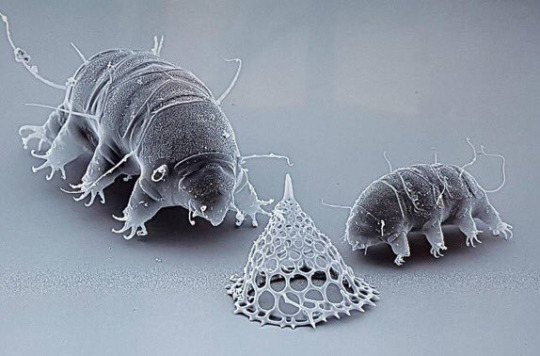
With humans, the only creatures to have reached the Moon alive are small, inconspicuous eight-legged creatures. But they are not spiders, or arthropods for that matter. While still their ancient relatives, tardigrades have followed a very different evolutionary path.
Tardigrades are part of our third and last ecdysozoan group, panarthropods - with a segmented body bearing multiple pairs of limbs. However, most of the tardigrade body isn't homologous to the arthropod one! Instead, most of their limbs correspond to what would become antennas and mouthparts in arthropods, functionally making them a giant head with two back limbs!
Most famous for surviving extreme conditions, from near-absolute zero temperatures to immense pressures or the vacuum of space, tardigrades achieve this thanks to a special capability called cryptobiosis. By entering a dehydrated "tun state", they preserve themselves while nearly stopping their metabolism, and can be revived decades later in perfect health! While they survived on the surface of the Moon, they do not thrive in those extreme conditions, only being dormant - in fact, they prefer moist environments like mosses or hot springs!
Fancy a mystery? Tardigrades today are divided into two main classes - the plump Eutardigrada and the armored Heterotardigrada. However, a third class, Mesotardigrada, was discovered in 1937, with a single specimen found in a hot spring near Mount Unzen, Japan. Of unique appearance among tardigrades, it was never found again despite repeated searches, and the type locality was destroyed years later.
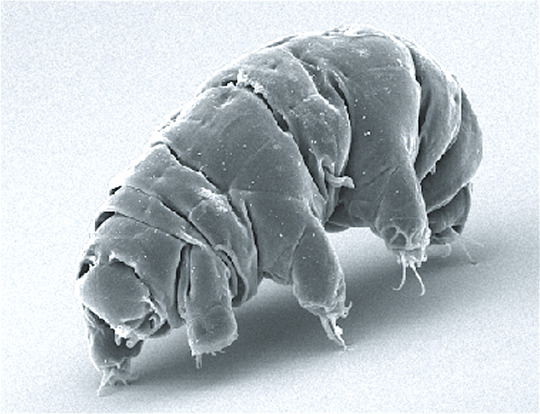

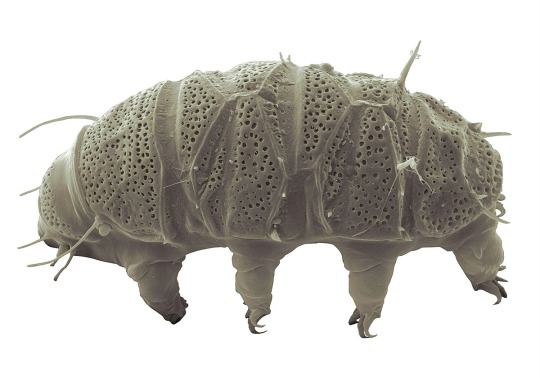

60 notes
·
View notes
Text

Glitterback (Artwork by https://www.deviantart.com/yuujinner)
Kingdom: Animalia
Phylum: "Lobopodia"
Class: "Xenusia"
Order: Xenaraneae
Family: Pterorhomidae
Genus: Pterorhomos
Species: P. polydens (“many-toothed flying woodworm”)
Temporal range: Pliocene to recent (4.333 mya - present)
Information:
Soaring through the dense undergrowth of Xenogaea’s rainforests, the Glitterback, also known by its native Xenogaean name as babunakiri (from babuna [“spider”, “tarantula”, “thing with fangs”] and kiri [“bat”, from a corruption of hakiryt, which literally means “mammal-bird” {haki, “mammal”, “thing with fur”, and ryt, “bird”}], hence having a combined meaning of “spider bat”), is as iconic to the Pacific island nation as it is bizarre. Though it looks like some sort of alien creature in comparison to most other animals living on Earth, the Glitterback is actually a large (roughly the size of a golden eagle), air-breathing, arboreal lobopod which has developed the ability to glide over long distances. Its jaws, not unlike those of a camel spider, are designed to rip and tear through its preferred prey: small birds and bird-like ornithurans living in the jungle canopy. While these animals make up some 70% of its diet, it will also go after arboreal dromaeosaurs, small primates, plesiadapiforms, arboreal therapsids (such as the venyukovioids), small pterosaurs, bats, snakes, and other arboreal reptiles, in addition to arboreal amphibians and amphibian-grade tetrapods, such as reptiliomorphs belonging to the family Dendrosauropidae. Like the avians which it primarily hunts, its sense of smell is rather poor, instead relying on its large, chameleon-like eyes to locate prey in the dense undergrowth. Its eyes are, in fact, some of the best in the panarthropoda clade, rivaled only by those of dragonflies. Its eyes can not only see in UV light, but also fast motion which would otherwise look like a frenzied blur to other organisms. In several tests, Glitterbacks were also shown to be quite adept at distinguishing between subtle color differences. These traits not only help them to spot birds ducking through the canopy, but to also better pinpoint their target’s location for when they go in for the kill. Anecdotally, Glitterbacks appear to have a symbiotic relationship with some of the sauropods found living in their native range, often using the large animals to hitch rides to new hunting locations in exchange for hunting small, hematophagous pterosaurs which often plague the sauropods.
In color, Glitterback tends to be a mottled green color with light blue spots on their backs (hence their name), though other color morphs also exist, including all-black with light blue dorsal spots, red with orange dorsal spots, light blue on the underside with green on top and brown dorsal spots, and, in very rare occasions, vibrant purple with red spots (though these individuals rarely live long in the wild since their coloration makes them easy to spot). Glitterbacks are quite vocal animals, emitting a wide range of calls from clicking to pulsating, guttural drumming to loud shrieking. These sounds are primarily used to convey location to other members of their species so as to establish their hunting territory. Glitterbacks are primarily crepuscular and nocturnal animals, hunting in low light levels and in an environment filled with potential obstacles in their path.
While commonly recognized as belonging a monospecific genus (i.e., it is the only known living member of its genus), studies on its genetics and morphology have revealed that the Glitterback may, in fact, constitute a species complex, with anywhere from 3-8 distinct species, of which at least one is usually considered distinct enough from the rest to be placed in a separate proposed genus, Babunakiriia.
Glitterbacks are notable for their longevity: in the wild, they may live up to 15 years, and in captivity, up to 25. Bizarrely, for an arboreal species, their life actually starts all the way at the forest floor, where the small (only slightly larger than a grain of rice), pearl-like eggs are laid in a small hole in the ground before being promptly buried. Once the eggs hatch after 3 weeks, the young, who resemble tiny, white insect larvae, will spend the next 2 years on the forest floor and in the soil hunting small invertebrates, such as worms and insects. The larvae, at this point, have underdeveloped eyes and no wing membrane between their front 3 pairs of limbs. Once they reach 2 years in age, they bury themselves in the soil and form a thin, elastic cocoon around themselves, emerging as their adult forms in the spring of the following year and making an exodus up the nearest tree to the jungle canopy. While the now 3-year-old Glitterbacks may have their adult forms, they will only begin to reach reproductive age at around 5 years old, when they receive their distinctive dorsal markings. Of the some 100,000 eggs the female lays, as few as just 10 may reach reproductive age, and siblings are not above cannibalism to erase the competition for resources. Once they reach sexual maturity, the female will emit a call which is often likened to a high-pitched rattling (which is made from grinding her chelicerae together rapidly) to significantly to males that she is ready to mate. However, she won’t mate with just anyone: males must present her with a fresh kill, and the more vibrant the prey, the better the male’s chance of her being sexually receptive. Copulation occurs while she feasts on the kill, and afterwards, the male departs back to his own region of the forest, not wanting to risk incurring the territorial wrath of another Glitterback. The fertilized eggs will be deposited on the ground in a few weeks time, and in another two years, she will be ready to mate again, a cycle which repeats up until her death.
Despite their territorial and aggressive nature, Glitterbacks tend to be either timid or inquisitive around humans, and outside of a few unconfirmed reports of attacks on small children in Xenogaea’s countryside, some of which were supposedly fatal, aggression towards humans is all but unheard of. However, being opportunistic feeders, a lone Glitterback which has found itself on the ground may, like many of Xenogaea’s other macropredators, occasionally resort to scavenging the graves of the recently deceased, a practice which has seen many tribal folks placing large slabs over the coffins of the deceased, digging the graves deeper, or exclusively cremating their dead in large funeral pyres.
While Glitterbacks are listed as a Least Concern species, poaching and the illegal pet trade are often listed as threats to their survival, with their ownership as pets being particularly popular in parts of many South American, Sub-Saharan African, and Southeast Asian countries because of their hunting prowess making them invaluable aids in fowling and their adaptations to living in a tropical climate making them well-suited to the environment and with navigating the dense jungle in pursuit of otherwise difficult-to-catch prey. However, as with many of the other indigenous lifeforms of Xenogaea, its export out of the country is highly restricted, with dead specimens being sold to museums for large sums of money, sometimes well in the millions of local currency, and live specimens only rarely being sold to biological research institutions. This has not only led to the black market sale of live specimens being highly valuable, but it has also led to underground breeding facilities overseas becoming a prevalent way to circumvent local laws against the trafficking of exotic animals. This issue of the black market sale of native wildlife is so deeply-entrenched within Xenogaea’s system, that the country’s government has a subdivision, the Bureau of Indigenous Wildlife Protection and Action Against Poaching (BIWPAAP), which is dedicated entirely to stopping poaching and illegal animal trafficking within the country and notifying the local authorities of other countries about the illegal sale and breeding of Xenogaean wildlife within their borders. If caught illegally selling a Glitterback in Xenogaea, the legal repercussions can range from anywhere from 4 years in prison and a $100,00 fine to 20 years in prison and as much as $1,000,000 in fines. It should be noted, however, that while the sale of a Glitterback, whether within the country’s borders and to a buyer outside of them, is illegal, the ownership of one in the country is not, and some native tribes may raise Glitterbacks for hunting purposes, much like buyers outside of the country.
#speculative evolution#scifi#fantasy#novella#speculative biology#speculative fiction#speculative zoology#worldbuilding#scififantasy#sci fi creature#fantasy creature#creature design#creature art#creative writing#creature#lobopodia#panarthropoda
9 notes
·
View notes
Text
Animal practice 29
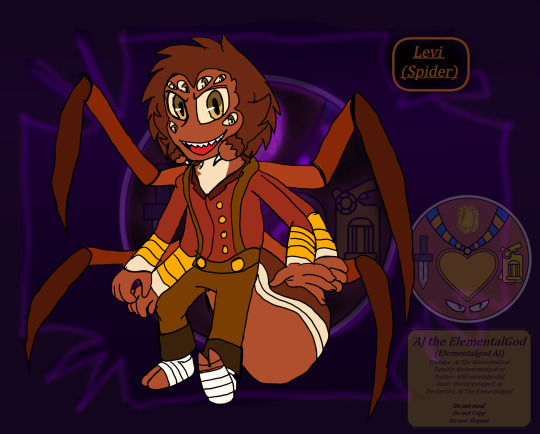



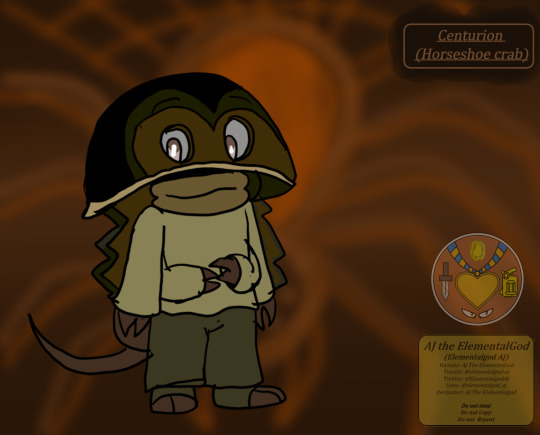
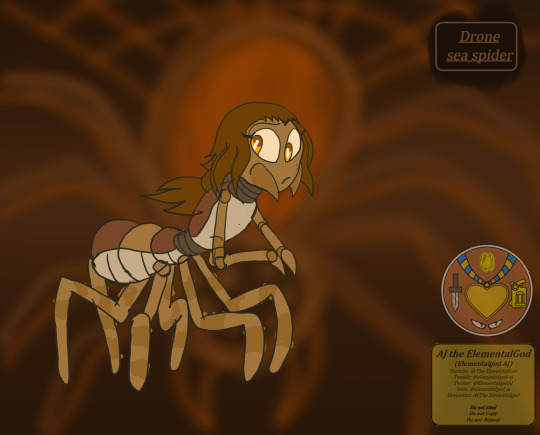
Panarthropoda
Arthropod 1
Chelicerata/Arachnids 1
Araneae
Levi (house Spider/Armed Spider)
Weav (Orb weaver spider/Long legs)
Scorpiones
Tenichi (Bark Scorpion)
Singe (Scorpion)
Xiphosura
Centurion (Horseshoe crab)
Pycnogonida
Drone (sea spider)
#the watchful eye#watchful eye#my art#my oc#my ocs#aj the elementalgod#elementalgod aj#isle 0#toonverse oc#o'kong family#neo demons#anthro allies#earthdemons#panarthropoda#arthropod#arachnids#Spiders#scorpions#horseshoe crab#sea spider
15 notes
·
View notes
Text



CALL THAT A LOVE BUG!!!!
#my art#oc art#oc stuff#horst#haunted#fennec#mako#wolf#red kite#astral#worm#I know velvet worms are panarthropoda doint yell at me#Happy valentines day#Worm cw#Worm tw
199 notes
·
View notes
Text
Paleo Appreciation Post #1
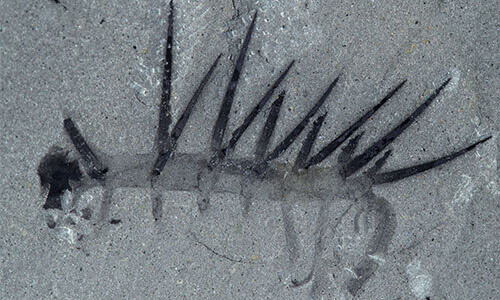
this here's a Hallucigenia. it's a wacky-lookin' worm-thing from the cambrian named cuz it looks like a weird hallucination. they're tiny lil fellas, only about .5 to 5 cm (or .25 to 2.25 inches if you're from that hamburger place) and have a slender neck, spindly legs and some mean-looking spikes. you can find 'em in deposits like the burgess shale in british columbia or floating around your house if you chug dish soap.

a little thing i'd like to add is that for quite some time, paleontologists thought those gnarly spikes were its legs (which is odd). slightly less odd is that bulbous head there; that's not supposed to be there! the "head" is actually the result of this lil fella's insides exploding out one end (because i hate to break it to ya, this thing's long dead).
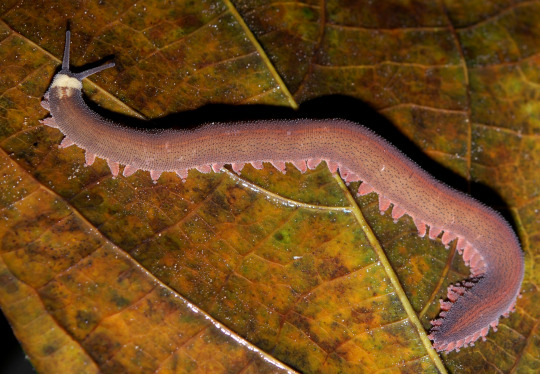
this isn't some really inefficient way of telling the world i've found a living Hallucigenia, that's a velvet worm. some taxonomists propose that Hallucigenia and this guy right here are part of the same clade, dubbed Panarthropoda, which also includes all living arthropods and tardigrades. in this proposed clade, both velvet worms and tardigrades are listed as descendants of Hallucigenia's phylum, which is neato.
i hope you appreciate the dude™ as much as me.
79 notes
·
View notes
Text
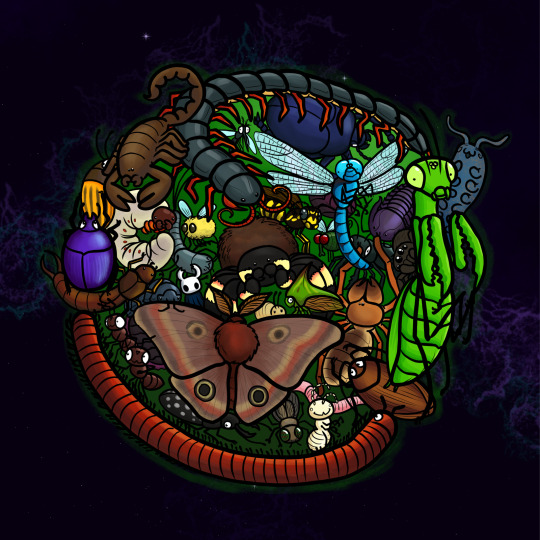
Hopping back onto Slowvember and continuing last year's work, starting with Panarthropoda
20 notes
·
View notes
Note
we need a poll for a monophyletic definition of "bug"
it can be anything from "any animal is a bug" to "only hemipterans are bugs" :p
(if you're taking suggestions, then animalia, protostomia, ecdysozoa, panarthropoda, arthropoda, hexapoda, insecta, pterygota, hemiptera)
See, I want to do that poll, especially bc I know I've been very vert-centric (sue me, my training is in vert paleo); but I know I've already seen that poll outside of palaeoblr???
14 notes
·
View notes
Text
30 Days of Autism Acceptance
9 April: Did an interest ever turn into an "obsession" for you? If not, do you regularly experience hyperfocus when you engage in your special interest? If nothing applies, tell us about your longest interest, no matter if it's a special interest or not!
Yes it did! My special interests at the moment are - as if you couldn't possibly guess from my blog /j - jellyfish, autism, and animal cladistics. However, these change pretty often. i.e. ask me again in six months and the list will probably have changed slightly.
I define "special interest" as in "brain links everything back to this topic" because otherwise it would be hard to tell where interests ended and special interests began. The fairly frequent changes make me wonder if this might be wrong, but then again the changes are usually changing to some other category within that broad topic (ie from liking jellyfish to liking, idk, tunicates)
Probably my longest special interest is animals more generally. When I was 3 - 8 I loved loved loved big cats, and more recently I've got into my cnidarians. (There was an in-between time with no particular animal obsession.) I've always loved cladistics (this is how you sort animals into groups, for example mammals, vertebrates, arthropods, and how these groups are related to each other) - I remember when I was five I made a book of all the different orders of mammalia and I took it into show and tell and lost it and the tragedy has stuck with me for years. However when I was littler I couldn't really indulge this interest because it's a very technical topic and you need some decent biology background knowledge to research it! More recently, I'm knowledgeable enough that I can actually appreciate the topic. I am working on building a diagram which shows how the different animal phyla are related to each other, and what their apomorphies are. :D though I’m struggling for how to distinguish the phyla of panarthropoda from each other…
1 note
·
View note
Photo
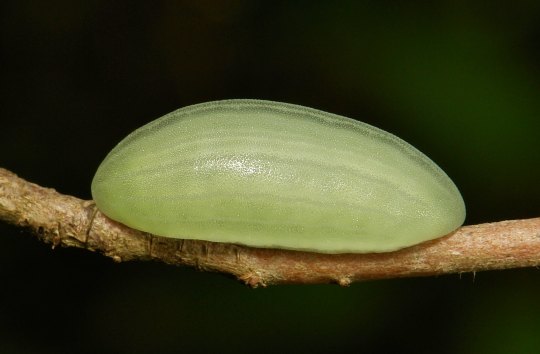
Cup moth caterpillar (Limacodidae)
Photo by itchydogimages
#unidentifiable#cup moth#caterpillar#limacodidae#zygaenoidea#apoditrysia#ditrysia#heteroneura#glossata#lepidoptera#insecta#hexapoda#pancrustacea#arthropoda#panarthropoda#ecdysozoa
15K notes
·
View notes
Video
I love the tardigrades I had found in my zoology class
#biology#biologia#zoology#tardigrade#tartigrádo#panarthropoda#meiofauna#cute#zoologia#biology student
14 notes
·
View notes
Photo
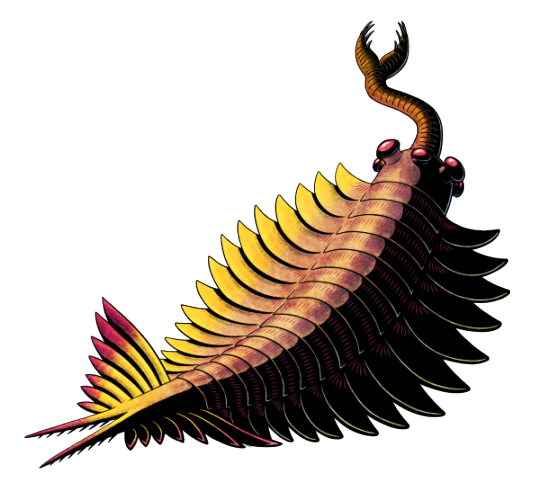
Ever since the bizarre anatomy of Opabinia was first recognized in the 1970s, it's been a persistently unique "weird wonder" of the Cambrian period. Over the decades we've figured out that it was an early type of arthropod in an evolutionary position between lobopodians and radiodonts, but this whole time it's still been sitting there alone as the only known representative of a weird stem-lineage with no other known close relatives.
…Until now!
A fossil from the Wheeler Shale in Utah, USA (~507 million years ago) that was originally thought to be a tiny radiodont has been re-studied, and now we finally have another member of the opabiniid family: Utaurora comosa.
Only about 3cm long (1.2"), Utaurora had 15 pairs of swimming flaps along the sides of its body, and a tail region with a 7-part fan and a pair of serrated spines. Hair-like gill blades covered both its back and the bases of its swimming flaps, and although its head region was poorly preserved it probably had an arrangement of 5 eyes and a long flexible claw-tipped proboscis similar to that of Opabinia.
Its discovery extends both the geographical and temporal known range of opabiniids, and suggests that their continued scarcity in other Cambrian fossil sites compared to other soft-bodied arthropods may simply be because they were just incredibly rare animals in those habitats at the time.
———
Nix Illustration | Tumblr | Twitter | Patreon
#science illustration#paleontology#paleoart#palaeoblr#utaurora#opabiniidae#dinocaridida#gilled lobopodians#panarthropoda#arthropod#invertebrate#cambrian explosion#art
481 notes
·
View notes
Photo

Today I learned that tardigrades are the disembodied head and mouthparts found in other Panarthropods, with the gonads and anus slapped right on where the rest of the crawly would go. Source
#tardigrade#weird land crabs#panarthropoda#annelida#onychophora#evodevo#wiggly boys#ecdysozoa#you do you little guys#i love that whoever made these dopey diagrams took the time face the spider eyes forward
30 notes
·
View notes
Text
Animal practice 30

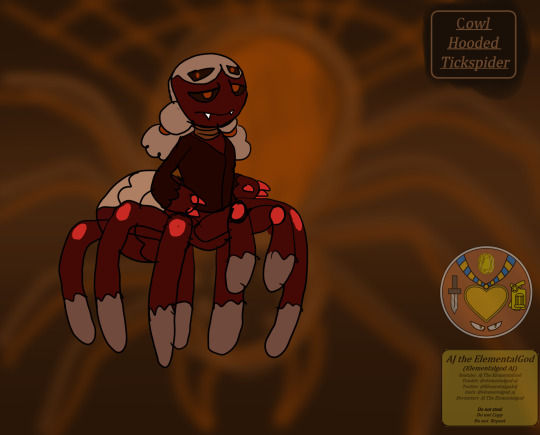
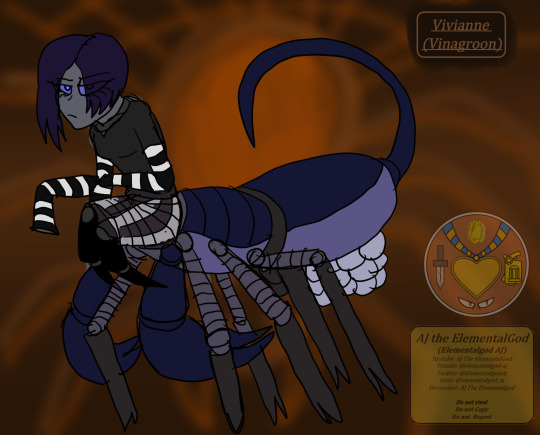

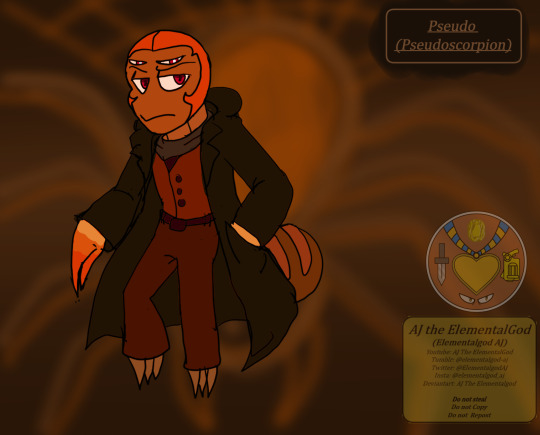
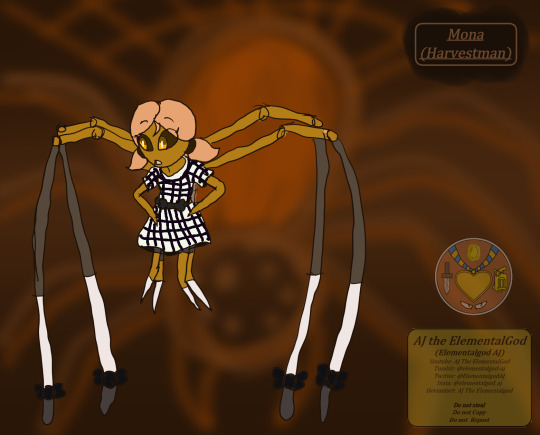
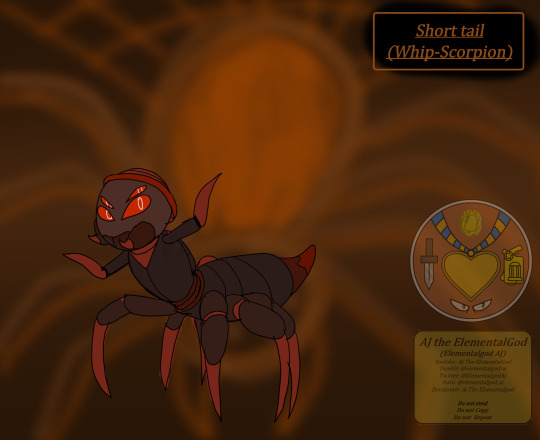


Panarthropoda
Arthropoda 1
Chelicerata/Arachnids 2
Solifugae
Volant (Camel Spider)
Ricinulei
Cowl (Hooded Tick spider)
Thelyphonida
Vivianne (Vinegaroon)
Palpigradi
Micro (Micro WhipScorpion)
Pseudoscorpiones
Pseudo (Pseudoscorpion)
Opiliones
Mona (Harvestman)
Schizomida
Shorttail (Short Tailed WhipScorpion)
Amblypygi
Jorōgumo (Whip Spider)
Acariformes & Parasitiformes
Ick (Mite)
Pox (Tick)whip
#the watchful eye#watchful eye#my art#my oc#my ocs#elementalgod aj#aj the elementalgod#isle 0#toonverse oc#o'kong family#neo demons#earthdemons#anthro allies#panarthropoda#arthropods#arachnid#camel spider#hooded tick spider#whip scorpion#vinegaroon#micro whipscorpion#pseudoscorpion#harvestman#short tailed whipscorpion#whip spider#mite#tick
14 notes
·
View notes
Text
i like the idea of a crash scientist who is like, a microbiologist and an artist, who has a huge petri dish that they use like a palette and they “paint” with all kinds of colonies of microorganisms. but also i almost feel like i could just apply all of that to brio. something new he starts trying out. i dunno! there are so many fanmade bug scientists that i feel like i don’t know what to do with n. tomon to make him interesting and i almost feel like i should try this instead
#if i keep n tomon and keep working with him i do wanna make his thing arthropods in general#instead of just insects#maybe even panarthropoda! so tardigrades and velvet worms too
8 notes
·
View notes